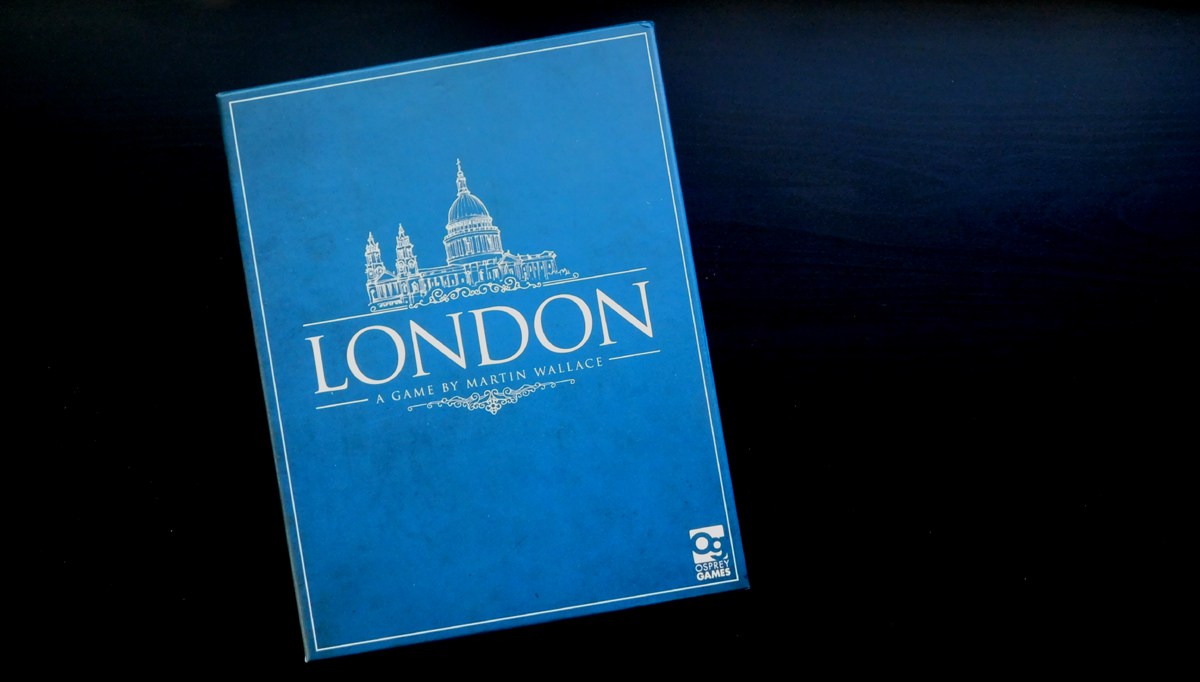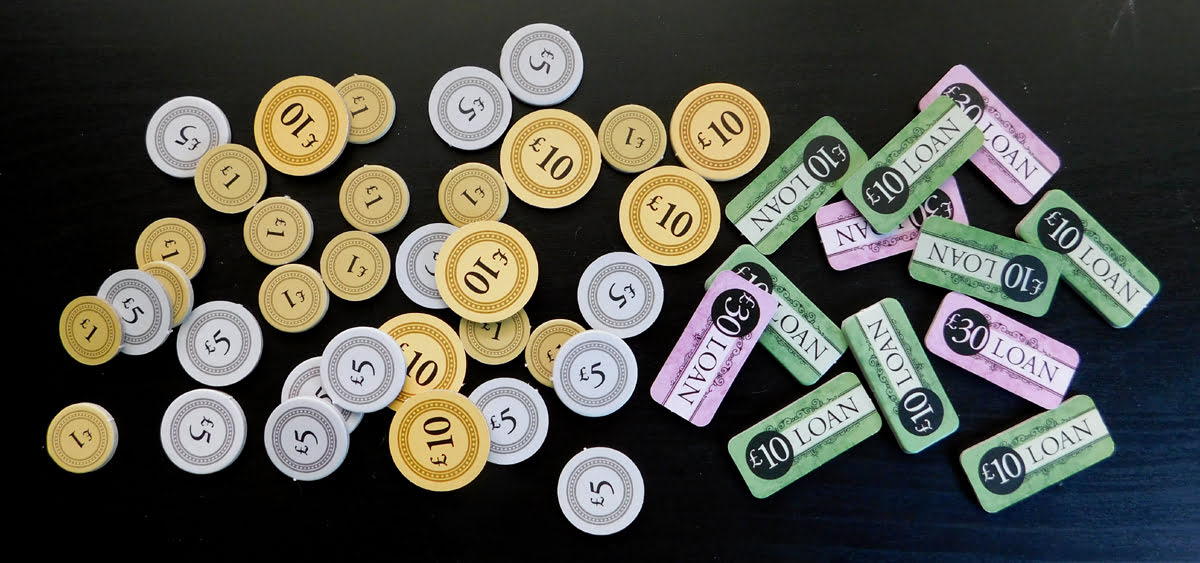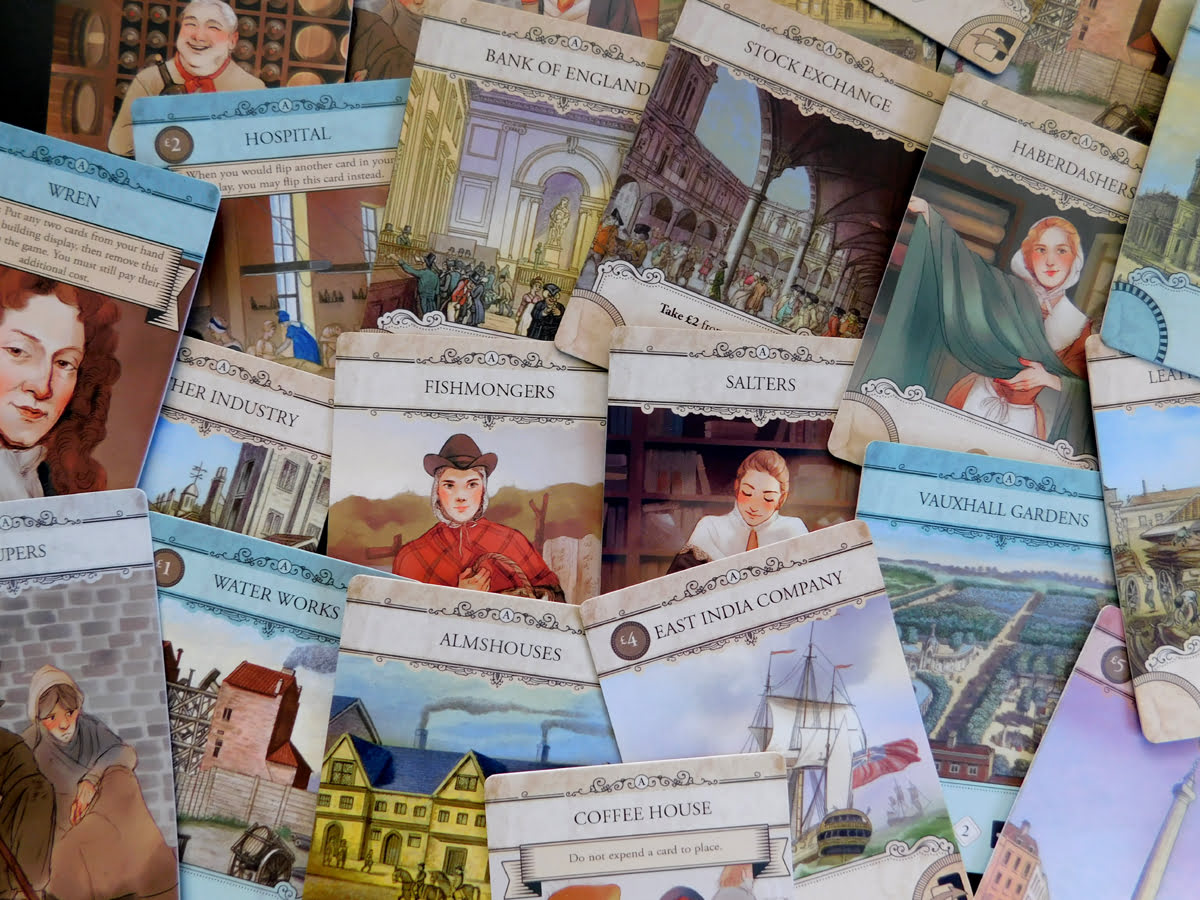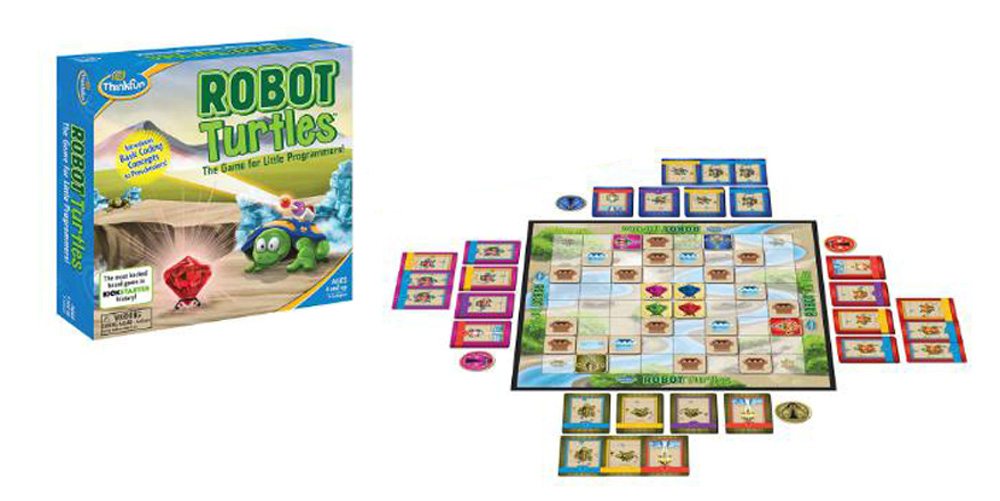
The Great Fire of 1666 has ravaged the city of London, leaving its once great streets in ruin. But this tragedy isn’t without a glimmer of hope, not to mention opportunity, as hungry young architects strive to leave their mark on this new London that will rise from the ashes.
London at a Glance
Originally released in 2010, London ($55.99) recently received an update and makeover courtesy of the designer (Martin Wallace) and publisher Osprey Games. A game for 2-4 players aged 13+, London puts you in the shoes of civil architects tasked with rebuilding the city of London after it was destroyed by fire. Over roughly 90 minutes of playtime you will develop the city from the wake of the fire over the following 250 years, aiming not only to restore the city’s infrastructure but also be remembered by London as the most prestigious architect of them all.
What’s in the Box?
The first edition of London was most certainly a product of its time, showing publishers’ emphasis on function over form, and sporting clunky graphic design and artwork that often feels counter to the goal of creating a new and beautiful city. The new publisher, Osprey, has remedied that entirely, starting with a stunningly-beautiful minimalist box that opens up like a book, demanding you to delve into its contents, which are as follows:
- Game board
- 101 City cards (In 3 decks: A, B, and C)
- 20 Borough cards
- 4 Scoring pawns
- 48 Cardboard coins
- 12 Loan tokens
- 44 Poverty tokens
The cards are a nice, durable finish, with the borough cards being oversized and especially pretty. My only disappointment is the cardboard chits, especially for the currency of the game, which feel woefully slapdash for a game that’s otherwise gorgeous. Depending on the amount of playtime this would get, I could easily see replacing the cardboard coins with metal ones.

How to Play London
If you struggle to make your way through the rules of London then don’t worry, you’re not alone. For a game that’s remarkably straightforward, I struggled to make my way through the rulebook, and found myself reading sentences over and over to make sure I understood.
Given the relative simplicity of the game and its mechanics, I think the primary stumbling block is the terminology. The subject matter of the game is somewhat mundane, and little to no effort has been given to differentiate elements inside the game. As you lay cards down you are developing land, essentially, but another option is to purchase borough cards which seem like they should also be land even though they function differently. At any rate, don’t let the similarly-themed elements get in the way of learning a quite streamlined game.
Setup
Lay the board out and place your chosen scoring pawns at zero. Note that in a two-player game only the first three spots on the development board will be used as you discard, while the fourth and fifth spots are used in three- and four-player games, respectively.
Make sure your city cards are divided into their three decks: A, B, and C (shown at the top of each card). Shuffle them, then place them on top of each other with C on the bottom and A on the top. Deal each player 6 cards, and then give each player £5. It’s also worth nothing that, at any time, a player can take a loan from the bank, which gives them an immediate £10 but also comes with a loan token (these can be repaid for £15 at the start of your turn).
Remove the three starting boroughs (City, Westminster, and Southwark & Bermondsey) from the borough deck and lay them face up (these are available property to purchase, and will be replenished with new property from the borough deck each time one is purchased).

Gameplay
The goal of the game is to earn prestige, which is tracked by your scoring pawn on the development board. This will be generated immediately in some cases, while other instances will be allotted at the end of the game. You will earn prestige by developing the most efficient, diverse, and poverty-free city, though this is easier said than done.
On your turn you have four options, each relatively simple, but each riddled with its own agonizing decisions and pitfalls.
Action 1: Develop Your City
To develop your city, you will be playing cards from your hand onto the table in front of you. You can cover up existing stacks of cards if you want (face-up or face-down, you can still build over them) or you can start a new stack. Each stack represents the growth of your city, and there’s never a way to remove a stack from your city. If you expand, that’s permanent. And while expansion and construction is at the heart of the game, there are drawbacks as well, which we’ll get to later.
Each building that you build must be paid for. While some have an additional monetary cost to build, all of them must be paid for by discarding another building from your hand that is of a matching color. So if I want to build my “Leather Industry” card (tan) then I can pay for it by discarding my “Huguenots” card (also tan). But note, all discarded cards go to the development board, so any buildings you burn as payment become available for other players to snag up for their own cities.
A few cards provide Actions, which are stated directly beneath the name. These cards give you an immediate effect before being removed from the game. You do not need to pay the discard cost to play these cards, as they are not actual buildings in your city.

Action 2: Buy Land
Buying land is one of the less-nuanced portions of the game, but no less integral than any other action. With this action, you can spend your money to purchase one of the available borough cards, which will give you an immediate effect that often includes some combination of gaining prestige, removing poverty tokens, and drawing cards.
Every time you purchase a new borough card, it is placed on top of the previous card so that only the location (North, South, East, West) of the previous card is showing. This is because some borough cards have active abilities that will trigger every time you run your city (shown on the bottom right of the card) or optional abilities that may trigger at various times if you choose (shown on the bottom center of the card).
Later in the game, various city cards will react based to the property you’ve purchased, making your riverfront boroughs more valuable, or rewarding North properties or South properties respectively. While early in the game buying boroughs may seem underwhelming, the prestige they give is often a game-changer and their late-game value from the afore-mentioned city cards is extremely potent.

Action 3: Draw Cards
Instead of buying or building, you can simply choose to add more cards to your hand (you can have up to 9, but cannot end your turn with more than that). To do this action, you will draw up to 3 cards in any order and in any combination from either the draw deck or the development board. If you don’t want to take all 3, you don’t have to, and oftentimes you will find yourself taking this action to snag certain cards from the board but not wanting to risk drawing blind, because too many cards in your hand can be a perilous hindrance when it comes to your fourth possible action…
Action 4: Run Your City
Here, as the name implies, is where you put everything you’ve done into action, insert your key, and take your new city for a test drive.
When you run your city, a series of things happen. First, in any order, you take the actions indicated on the front of your topmost city cards in each stack. You can choose not to activate all of these if you want, and some may require an extra cost to activate, which you must pay if you wish to run that building this turn. These actions will vary, but for the most part will do some form of the following: generate money, generate prestige, give you cards, or remove poverty.
Some, in addition to a positive effect, will add poverty to your city, which you take in the form of the small, black cubes (1 poverty) and discs (5 poverty), though if you have both add and remove effects in your city, you can usually order them in such a way that you remove the poverty that you add. Also, in addition to your buildings, if you have a borough card on top of your property stack that has a triggered effect, this is the time you will activate that effect.
Each building in your city will indicate with a symbol (or lack thereof) in the bottom right section whether or not it is a one-time use. In the case where it is, you will then flip that card face-down, leaving an empty district in your city to be built back up again. Others remain active and can be used every time you run your city until you decide to build over them in favor of something better.
And then, after reaping the rewards of your hard work, it’s time to pay the piper… After you run your city, you gain 1 additional poverty for each district (stack of cards) in your city and 1 more poverty for each card in your hand. Yes, in case you’re wondering, that can be a lot of poverty.

Winning the Game
And that’s how London is played. Four simple actions each with complex ramifications. The game continues until the deck is emptied, at which point each other player takes an additional turn. At that point, all cards in your city are revealed (including any that were built-over and/or turned face-down) and all prestige points on them are calculated and added to your score (not all buildings give prestige, but those that don’t often compensate with a better in-game reward like cash or cards).
All players add a poverty for each card in their hand and then remove them from the game. If possible, they pay off any remaining loans to the bank, and then lose 7 prestige for each remaining loan and gain 1 prestige for every £3 they have left.
Finally, poverty is counted and it is determined which player has the least. All players then remove that much poverty from their city (so the player with the least poverty removes all of his) and then they lose prestige based on how much poverty is remaining (there’s a chart on the board to calculate this). The player with the most prestige is, of course, the winner.
Will You Like London?
London is a wonderfully-complex web of decisions masquerading as a simple engine-builder, and for that I love it.
Your first game through, you’ll find yourself wondering where the game is as you lay your city cards, draw more, and prepare to launch full speed into the next century. But all your great blueprints for the future (see what I did there?) come to a grinding halt when you realize the impact of your actions.
Promissory notes nag at the back of your mind as you mortgage your future to build your present. Meanwhile it seems like every moment of triumph is plagued by the specter of poverty lurking around the linings of your city like a plague just waiting to devour you.

So you turn your attentions to your city’s financial well-being. Instead of building for your own wealth or your own prestige, you decide to work hard to eliminate the poverty problems that are crippling your new metropolis. You buy property, build train stations, and begin to whittle away at your pile of black cubes only to realize that your opponent has leapt ahead in prestige.
London is a game that offers no perfect answers, and the best you can hope for is some modicum of balance as you build your city. The upside is that, if you’re careful, your wrong decisions aren’t too devastating. A misstep here can be eased as you prepare to run your city the next time, and this brings a wonderful tightness to each game. Even though it may feel as though your opponent is too far ahead in prestige for you to ever catch up, too much poverty or outstanding loans can bring him crashing right back down at the end of the game.
For a game that has very little chance involved, London is predicated on themes of gambling, as you borrow against what you think you can accomplish and roll the dice that you’ll be solvent before the game’s end. This is a wonderful feeling that is often lacking in the more mechanically-minded games that have pushed elements of luck to the periphery, and it works wonderfully in the absence of those luck-induced swings. If you fail, if the bank comes clamoring at your door and destroys your score, it is because of your own greed, ambition, and lack of planning. And that means that, when you lose, instead of growing frustrated you sit back, think through your mistakes, and demand to play again.
The only downside to the game is aesthetic, as its historical setting and stoic presentation can give the impression that it’s a more austere, arduous game than it actually is. But if you can get past the setting, past the manual, and into the game itself, you won’t regret it.

![]() To subscribe to GeekDad’s tabletop gaming coverage, please copy this link and add it to your RSS reader.
To subscribe to GeekDad’s tabletop gaming coverage, please copy this link and add it to your RSS reader.
Click here to see all our tabletop game reviews.
Disclosure: GeekDad received a copy of this game for review purposes.





Hi from Germany,
we like London a lot. But from time to time there are games where one of us draw in every turn the card that fits perfect. Then you have no chance of winning, no matter what you do. So, it’s a card game…besides that it is a little too long as a two player.
Regards
Ralf